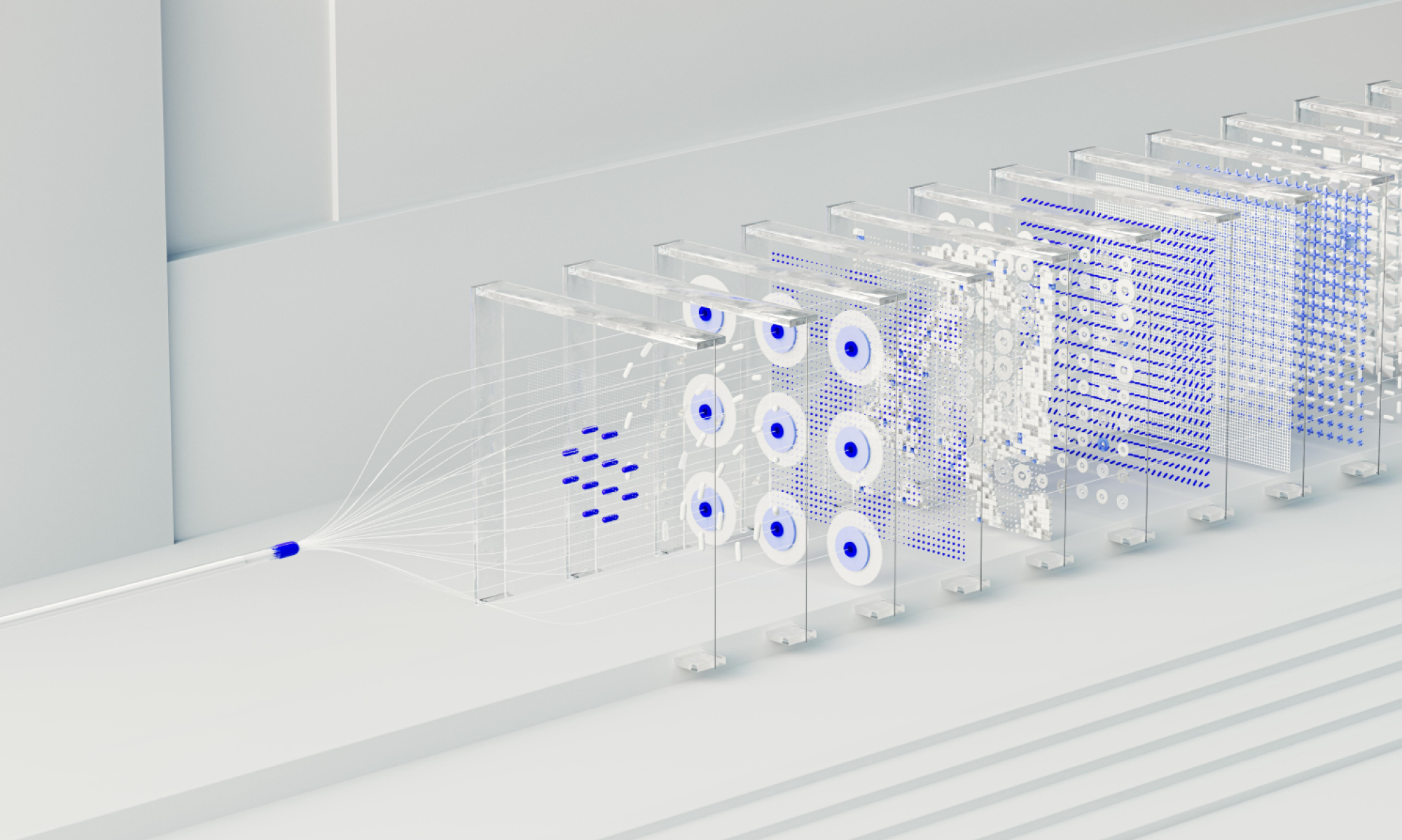AI
our blog
Master gestalt principles similarity for Effective Design Implementation

Overview
The article highlights the effective implementation of the gestalt principle of similarity in design, aimed at enhancing user experience. By grouping visually similar elements—such as color, shape, and size—designers can create intuitive interfaces that significantly improve comprehension and navigation. Research supports this approach, demonstrating that such principles notably reduce misinterpretation errors. This understanding not only reinforces the importance of design choices but also provides actionable insights for professionals seeking to elevate user engagement.
Introduction
In the realm of design, the principle of similarity serves as a cornerstone of effective visual communication. Rooted in Gestalt theory, this principle elucidates how our brains instinctively group elements that share common characteristics, such as color, shape, or texture. This cognitive tendency not only streamlines user navigation but also enhances the overall comprehension of digital interfaces.
As designers endeavor to create intuitive experiences, understanding and implementing this principle becomes paramount. The journey of leveraging similarity in design is filled with opportunities for innovation and improved user engagement. As the digital landscape continues to evolve, mastering this principle will undoubtedly shape the future of user interface design.
Understand the Principle of Similarity in Gestalt Theory
The concept of resemblance, a fundamental aspect of Gestalt theory, illustrates the gestalt principles of similarity by positing that components sharing visual traits—such as color, shape, size, or texture—are perceived as interconnected. This cognitive phenomenon stems from our brain's inherent tendency to group similar items, illustrating the gestalt principles of similarity, which enhances comprehension and navigation. For example, when presented with a mix of circles and squares, individuals instinctively categorize the circles separately from the squares, regardless of their spatial arrangement. This understanding is vital for designers aiming to craft intuitive and user-friendly interfaces.
To effectively leverage the principle of similarity in design, consider the following:
- Visual Characteristics: Identify which attributes (color, shape, size) will be utilized to group elements, ensuring a clear visual hierarchy.
- Audience Perception: Acknowledge that individuals will naturally group similar items; thus, plan with this instinct in mind to foster a cohesive visual narrative.
- Practical Examples: Analyze effective layouts that implement resemblance, such as e-commerce sites that categorize related items by color or shape, demonstrating how this principle enhances usability.
Recent studies indicate that layouts utilizing gestalt principles of similarity can significantly improve comprehension. For instance, an experiment revealed that increasing the application of gestalt principles of similarity in line graphs resulted in better interpretation among individuals, underscoring the effectiveness of visual grouping in minimizing misinterpretation errors. Notably, capacity assessments for categorized structures were measured at 4.70, compared to 1.76 for isolated structures, illustrating the principle's impact on understanding. As we advance into 2025, the application of gestalt principles of similarity in interface design remains critical, influencing how individuals perceive and interact with digital products. By prioritizing this principle, designers can cultivate more engaging and effective user experiences. As Max Wertheimer articulated, "The cells of an organism are parts of the whole, and excitations occurring in them are thus to be viewed as part-processes functionally related to the whole-processes of the entire organism." This perspective highlights the importance of examining how visual components interrelate within the overarching structure.
Implement the Principle of Similarity in Your Designs
To effectively apply the gestalt principles similarity in your creations, consider the following actionable steps:
- Identify Key Elements: Begin by pinpointing which components in your layout should be grouped. This may include buttons, icons, or text blocks that share a similar function.
- Choose visual characteristics that will signify resemblance, utilizing the gestalt principles similarity. For instance, employing a consistent color palette for all buttons or using similar shapes for icons can create a unified look. Significantly, more than 60% of brands have re-evaluated their color palettes in the previous year to remain aligned with contemporary style trends, underscoring the significance of visual attributes. Create a visual hierarchy by leveraging gestalt principles similarity to establish it. Group related items to facilitate intuitive navigation. For example, ensure all call-to-action buttons share a consistent color and shape to enhance visibility. Companies that uphold uniform styles across platforms experience a notable rise in brand loyalty and consumer trust, with 71% of businesses recognizing this connection.
- Test with Participants: Engage in usability testing to evaluate how individuals interpret the grouped elements. Gather feedback on the user-friendliness of the layout and implement required modifications based on their insights. Ongoing enhancement and iteration are crucial elements of efficient thought processes, guaranteeing that your creation develops according to the needs of individuals.
- Iterate and Improve: Utilize feedback from individuals to enhance your creation. Verify that the elements categorized by gestalt principles similarity enhance the overall experience for individuals, preventing any possible confusion. In fact, 56% of companies have adjusted their creative approach to enhance brand consistency, highlighting the importance of sustaining uniformity in aesthetics.
Implementing these steps can lead to creations that not only look cohesive but also significantly enhance user engagement and satisfaction.
Troubleshoot Common Issues in Applying Similarity
When utilizing the gestalt principles similarity, designers may encounter several common challenges. Here are some troubleshooting tips to help you navigate these issues:
-
Excessive Use of Resemblance: While categorizing components can enhance understanding, an overreliance on resemblance may lead to a monotonous design. To counter this, it is crucial to strike a balance between gestalt principles similarity and contrast. As Kurt Koffka, a distinguished Gestalt psychologist, observed, "The whole is other than the sum of the parts." This underscores the importance of considering how various components interact. For instance, employing different colors or shapes can effectively differentiate between groups while preserving a cohesive appearance.
-
Misleading Similarity: Occasionally, elements that appear similar may inadvertently imply a relationship that does not exist. It is essential to ensure that only genuinely related items share visual characteristics. For example, avoid using the same icon for different functions, as this may cause confusion among users. Research indicates that deceptive resemblance can lead to significant user perplexity, highlighting the necessity for clarity in presentation, particularly when considering gestalt principles similarity.
-
Neglecting Context: The context in which components are displayed can significantly influence how likeness is perceived. Always consider the surrounding elements and their interaction with your design. Evaluating your concept in various situations is vital to ensure that the gestalt principles similarity is effectively applied. The case study titled 'Educational Resources on Gestalt Principles' demonstrates how understanding context can enhance the effectiveness of visual composition.
-
User Feedback: Actively seek user feedback to identify areas where the principle of similarity may not function as intended. Users may perceive relationships differently than designers anticipate, making their insights invaluable. Dr. Albert Szent-Gyorgyi once stated, "Research is to see what everybody else has seen and to think what nobody else has thought," highlighting the importance of unique perspectives in the creative process.
-
Iterative Design: Design is inherently iterative. Do not hesitate to revisit and modify your creations based on testing and feedback. Continuous improvement will aid you in refining your application of likeness and enhance the overall user experience.
By recognizing these common challenges and employing these troubleshooting strategies, you can effectively apply the gestalt principles similarity in your designs, resulting in more intuitive and engaging user experiences. Remember, Gestalt Principles are fundamental for understanding both concept and content in design, making it essential to address these challenges with careful consideration.

Conclusion
The principle of similarity is fundamental in effective design, shaping how users perceive and interact with digital interfaces. By recognizing how our brains instinctively group similar elements—such as color, shape, and texture—designers can craft intuitive experiences that significantly enhance usability. Key strategies include:
- Identifying essential elements to group
- Selecting consistent visual characteristics
- Establishing a clear visual hierarchy
These practices not only streamline navigation but also foster a cohesive visual narrative that resonates with users.
Implementing similarity requires thoughtful consideration to avoid pitfalls such as overuse or misleading similarity. Achieving a balance between similarity and contrast is crucial for maintaining visual interest and clarity. Engaging in usability testing and iterating based on user feedback ensures that designs evolve to effectively meet user needs. By prioritizing these principles, designers can markedly enhance user engagement and satisfaction, ultimately creating memorable digital experiences.
As the digital landscape continues to evolve, mastering Gestalt principles like similarity will remain a cornerstone of user interface design. Emphasizing this principle can lead to more engaging, user-friendly designs that not only meet functional requirements but also enrich the overall user experience. The future of design hinges on the ability to seamlessly integrate these cognitive principles, ultimately shaping how users connect with digital products.









